THORGEON Emergency luminaires

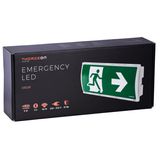
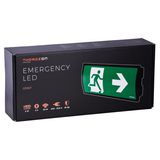
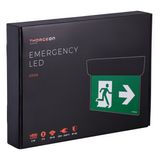
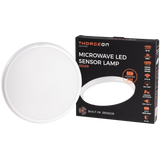

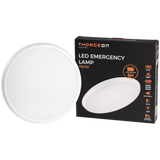

thorgeon emergency luminaires for compliant egress coverage
Engineers use thorgeon emergency luminaires where escape paths must meet EN 1838 levels with predictable spacing. Typical emergency flux is 120–500 lm, enough to hold ≥1 lx on the escape centerline and anti-panic areas when optics are chosen correctly. Bodies come in IP20 for ceiling voids and IP65 vandal-resistant housings for stair cores and façades. Drivers conform to EN 60598-2-22 practice; recharge after a full discharge is usually 12–24 h. Spec sheets for thorgeon emergency luminaires include spacing tables, Tc points, and ambient limits −10…+40 °C so acceptance tests are unambiguous.
thorgeon led emergency lights optics, spacing, and photometry
Open-area lenses spread a wide rectangular field; corridor lenses push a long, narrow beam to stretch lumens along the path. Maintained variants deliver room illuminance in normal operation, switching to emergency mode at reduced output; non-maintained versions remain dark until mains fails. Electrical design targets PF ≥0.9 in maintained mode and low ripple to avoid camera artefacts in control rooms. Installers prefer thorgeon led emergency lights with clear mounting heights and spacings printed on the label; repeating the same thorgeon led emergency lights family floor-to-floor stabilises aiming and test records.
thorgeon safety luminaires housings, ingress, and impact data
Polycarbonate diffusers and clips withstand frequent servicing; IK08–IK10 options protect in public routes. IP65 gaskets keep seals honest through temperature cycles, and captive screws speed night work. Through-wiring keeps trunking tidy; terminals accept 0.5…2.5 mm² with 0.5–0.8 Nm torque windows. In pool corridors and coastal air, stainless hardware prevents clip corrosion. Facilities stock thorgeon safety luminaires by IP/IK pair and colour temp, using the same thorgeon safety luminaires envelope to keep bezel planes aligned across refits.
thorgeon battery backup luminaires energy storage and testing
LiFePO₄ packs dominate for 3 h autonomy and long cycle life; NiMH remains viable in mild ambients and low-profile bodies. Smart chargers manage temperature and balance cells; typical self-test intervals perform function tests weekly and duration tests quarterly. Green/red indicators follow common site conventions; remote inhibit contacts support generator drills. Specifiers tag thorgeon battery backup luminaires by autonomy class and chemistry to simplify spares; maintenance records for thorgeon battery backup luminaires track test outcomes, recharge time, and pack age per asset label.
thorgeon exit lighting signage performance and viewing geometry
Internally illuminated signs use ISO 7010 pictograms with high contrast and uniform luminance; viewing distance derives from legend height per EN 1838 practice. Double-sided blades cover cross-corridors; edge-lit plates keep depth minimal above doors. Accessories offer arrow kits for last-minute orientation changes. For smoky environments, brighter faces and higher mounting improve readability. Projects adopt thorgeon exit lighting with consistent pictogram sets and fixing centers so replacement thorgeon exit lighting slides into existing brackets without re-drilling.
thorgeon emergency lighting systems control, monitoring, and reporting
Self-contained devices support local self-test; networked ranges expose status via DALI-2 or dry-contact gateways for BMS logging. Event histories capture function/duration tests, lamp faults, and battery metrics for audits. Central-battery variants reduce distributed maintenance where access is difficult. During rollouts, planners define one namespace for device IDs so thorgeon emergency lighting systems export clean CSVs; operations then reuse those thorgeon emergency lighting systems templates at handover and periodic inspection.
thorgeon standby luminaires task levels and high-risk zones
Where the aim is operational continuity rather than evacuation, maintained heads deliver higher lux for selected tasks—reception desks, control rooms, or process bays. High-risk task areas require elevated illuminance and glare control per EN 1838; neutral optics avoid veiling reflections on displays. For auditoriums and hospitality, dimmed standby delivers wayfinding without distracting guests. Designers specify thorgeon standby luminaires with scene-aware drivers and addressable test ports; the same thorgeon standby luminaires footprint simplifies spares across venues.
Technical specifications and engineering notes
- Autonomy classes: 1 h and 3 h common; confirm recharge time after full duration test.
- Batteries: LiFePO₄ for long life and temperature resilience; size packs to ambient and test cadence.
- Photometry: choose corridor vs open-area optics; validate spacing at planned mounting height.
- Wiring: segregate SELV control from mains; keep earth tails short; glands sized to jacket OD to preserve IP.
- Labelling: record circuit ID, device address, autonomy, and install date on each unit for audit trails.
Applications and compatibility
Office cores, hotels, and residential towers rely on compact maintained downlights in corridors; plant rooms and car parks use IP65 bulkheads; façades require vandal-resistant bodies and wide-throw optics for external routes. Products align with the same gland threads, terminal windows, and label formats used in your general lighting, so panels and drawings stay consistent.
Selection criteria for B2B buyers
Fix mode (maintained vs non-maintained) and autonomy, then pick optics by space type. Lock chemistry by ambient and service interval. Confirm IP/IK and mounting substrate; check Tc and driver clearance in shallow voids. Standardise pictogram sets and viewing distances; publish test cadence and reporting format before first fix.
Advantages of working with Bankoflamps
We schedule deliveries to match commissioning. Quotes with EAN/MPN land in about an hour, and live EU stock is visible before crews are booked. Your portal shows lead times, shipment tracking, and downloadable price lists with validity periods that hold budgets. Trusted accounts use post-payment up to 30 days. We consolidate per room and riser so luminaires, signs, batteries, and test gear arrive together, and your account manager cross-checks optics, autonomy, chemistry, IP/IK, gland sizes, and addressing plans against your drawings—keeping emergency kits site-ready across France, the Baltics, Germany, Spain, Italy, Belgium, and the Netherlands.